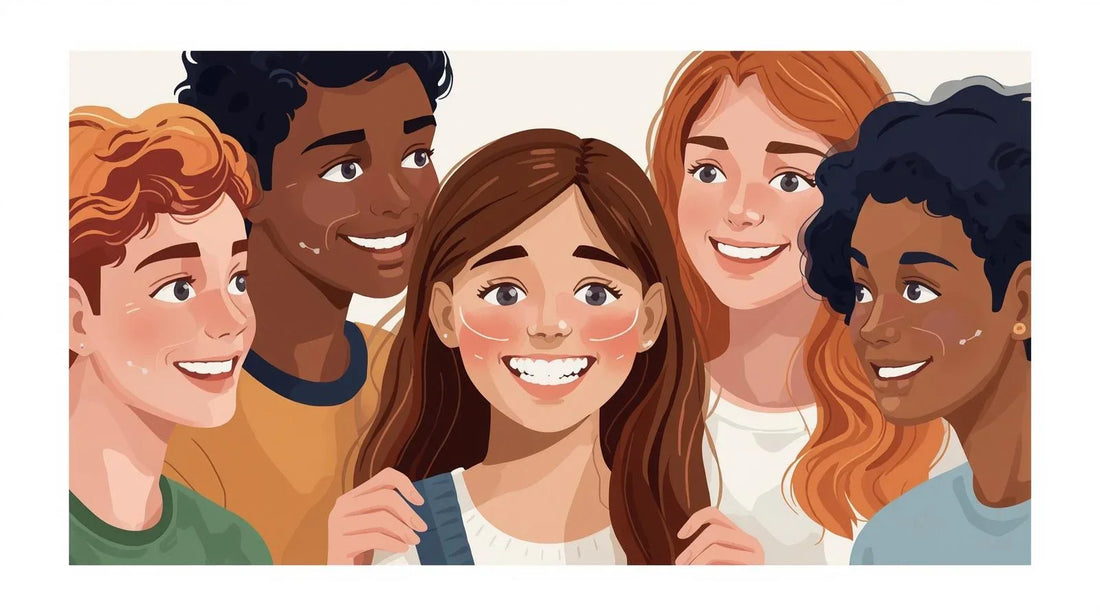
Reviv for Teens: Early Bite Correction to Prevent Facial Asymmetry (What Parents Should Know)
Share
In this guide, I’ll break down the science, the warning signs, and what parents need to know if they want to protect their child’s jaw health and facial balance—without jumping straight into braces or surgery.
1. Why Bite Alignment Matters More Than You Think
Most parents think braces are for straight teeth.
But the truth? A proper bite is about muscle balance, jaw growth, and even airway function.
Misaligned bites can quietly change the way a teen’s face develops.
That’s why addressing bite issues early matters.
2. How Facial Asymmetry Starts in Teens
Asymmetry often begins with small imbalances—like one side of the jaw doing more work than the other.
Over time, these imbalances shape bone growth.
Think of it like a tree growing toward the sun—constant force changes its form.
For related insights, see TMJ in Children and Teens: Early Signs, Risks, and Solutions.
3. The Role of Growth Spurts in Jaw Development
Teens go through rapid growth spurts.
If their bite is misaligned during these phases, the asymmetry grows with them.
Reviv can guide the jaw into proper alignment before the growth plates close.
4. Reviv vs. Waiting for Orthodontics
Traditional orthodontics often waits until all adult teeth come in.
Reviv starts earlier—sometimes years before braces would be considered—helping guide natural growth instead of just reacting to it.
For more on early intervention, see Can a Mouthguard Fix Facial Asymmetry?
5. How Reviv Works for Teens
Reviv is not a traditional night guard.
It’s designed to gently reposition the jaw so that bite forces are balanced during rest.
This reduces strain on muscles and joints while encouraging symmetrical growth.
6. Signs Your Teen Might Need Bite Correction
-
One side of the face looks fuller than the other
-
Jaw clicks or pops when chewing
-
Frequent headaches or neck stiffness
-
Uneven wear on teeth
-
Lips not closing naturally when relaxed
7. Why Teens Grind Their Teeth (and Why It Matters)
Teeth grinding (bruxism) isn’t just an adult stress problem.
Teens grind due to misaligned bites, airway issues, or jaw tension.
Over time, it accelerates asymmetry.
See Best Home Remedies for Night-Time Teeth Grinding.
8. Preventing TMJ Issues Before They Start
Early intervention with Reviv means less chance of developing painful TMJ disorders later in life.
For more on this, read Best Mouthguard for TMJ Pain.
9. How Facial Symmetry Impacts Confidence in Teens
Teen years are when self-image is at its most fragile.
A more balanced facial structure often means more confidence in social and school settings.
10. The Science Behind Muscle Memory and Jaw Position
Your jaw muscles adapt to repeated positions.
Reviv retrains those muscles so the “default” is balanced and centered.
11. Avoiding the “Wait and See” Trap
The most common advice parents hear? “Let’s wait until all the teeth come in.”
That’s risky—by then, the asymmetry may be locked in.
12. What to Expect in the First Month of Reviv Use
Most teens notice less jaw tension within the first 2–3 weeks.
Facial balance changes take longer—usually months—not days.
13. How Reviv Differs from Over-the-Counter Mouthguards
Store-bought guards are just barriers.
Reviv is a corrective device designed with jaw biomechanics in mind.
See What’s the Difference Between Reviv and Regular Mouthguards?
14. Why Early Bite Correction Saves Money Long-Term
Correcting the bite early can reduce or even eliminate the need for complex orthodontics or surgery later.
15. Airway Health: The Hidden Factor in Bite Alignment
A constricted airway can cause jaw posture changes.
Reviv can help open the airway by guiding the jaw forward slightly.
See TMJ and Sleep Apnea: Understanding the Connection.
16. Combining Reviv with Myofunctional Therapy
For faster results, pair Reviv with exercises that strengthen tongue and jaw muscles.
See How Correcting Your Bite Can Improve Posture.
17. How to Track Your Teen’s Progress
-
Take monthly profile photos
-
Monitor for changes in posture
-
Ask if headaches or jaw tension improve
-
Watch for more balanced chewing patterns
18. Common Myths About Early Bite Correction
Myth: “It’s just cosmetic.”
Truth: It’s functional first, aesthetic second.
Myth: “They’ll grow out of it.”
Truth: They usually grow into it—making it worse.
19. The Role of Dentists in Early Intervention
Not all dentists are trained to spot asymmetry early.
Seek out one who understands functional jaw orthopedics.
20. When to Start Reviv for Teens
Best results come before late puberty—typically between ages 12–16.
But it’s never “too late” to improve bite balance.
FAQs
1. Can Reviv replace braces?
No. It complements orthodontics by ensuring the jaw is in the right position before or during treatment.
2. How long should a teen wear Reviv each day?
Usually overnight, but some cases benefit from short daytime wear.
3. Is it safe for teens?
Yes—when fitted and monitored by a trained professional.
4. How soon will we see results?
Muscle relaxation can happen in weeks; visible symmetry takes months.
5. Does insurance cover Reviv?
Some plans may, especially if linked to TMJ or bite correction.
6. Can Reviv help with headaches?
Yes—especially those caused by jaw tension.
7. Is there an adjustment period?
Most teens adapt within a few nights.
8. Do teens need follow-up appointments?
Yes—progress checks ensure the bite is improving as intended.
9. Can it help if my teen already has braces?
In some cases, yes—especially if the braces aren’t correcting jaw position.
10. What happens if we skip early correction?
Facial asymmetry and TMJ risk increase with age.
Conclusion
Reviv for teens is about more than fixing smiles—it’s about guiding healthy jaw growth before asymmetry becomes permanent.
By starting early, you can protect your teen’s confidence, comfort, and long-term health.
If you’re serious about preventing facial imbalance, now is the time to act.
Click Here to get Reviv and start your teen’s bite correction journey today.
